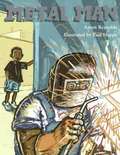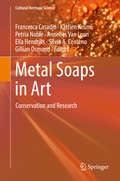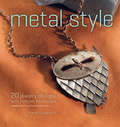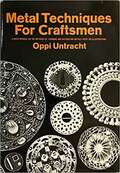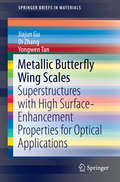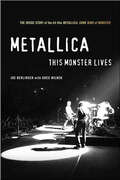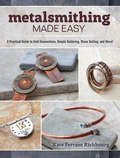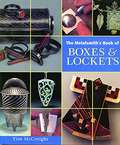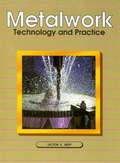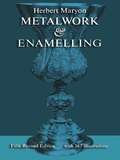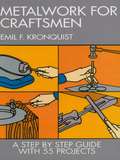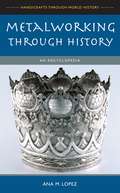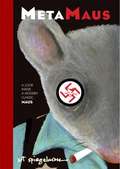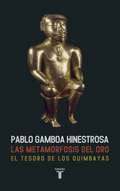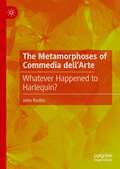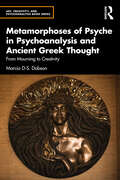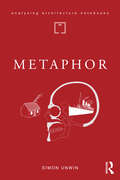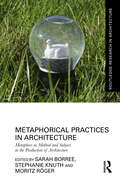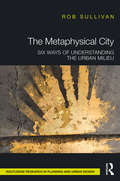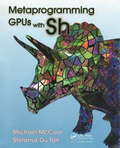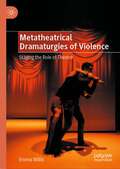- Table View
- List View
Metal Forming
by William F. Hosford Robert M. CaddellThis book helps the engineer understand the principles of metal forming and analyze forming problems - both the mechanics of forming processes and how the properties of metals interact with the processes. In this fourth edition, an entire chapter has been devoted to forming limit diagrams and various aspects of stamping and another on other sheet forming operations. Sheet testing is covered in a separate chapter. Coverage of sheet metal properties has been expanded. Interesting end-of-chapter notes have been added throughout, as well as references. More than 200 end-of-chapter problems are also included.
Metal Man
by Aaron Reynolds Paul Hoppe"There's a fire in me, just like that torch." Devon visits the Metal Man at his fiery workshop every day, despite the scorching heat of the city where he lives. At the Metal Man's shop, sparks fly from his welding torch as he cuts and melts together old pieces of junk into works of art. Devon is fascinated by the Metal Man's creations. Then one day, the Metal Man lets Devon put his own imagination to work. Aaron Reynolds's urban voice and the gritty illustrations of Paul Hoppe bring an exciting beat and pulse to the story of a young boy discovering his own voice and vision in art with a kind mentor to lead the way.
Metal Soaps in Art: Conservation and Research (Cultural Heritage Science)
by Francesca Casadio Katrien Keune Petria Noble Annelies Van Loon Ella Hendriks Silvia A. Centeno Gillian OsmondThis go-to reference work surveys the current state of knowledge in the field of metal soap-related degradation phenomena in art works. It contains detailed descriptions and images of the different phenomena and addresses the practical aspects of soap formation, preventive conservation, and treatment.The occurrence of metal soaps is one of the defining issues in the conservation of painted surfaces, and one that presently leaves innumerable open questions. It is estimated that around 70% of paintings in museum collections are affected by some form of metal soap-related degradation. In recent years, significant advances have been made in the detection and characterization of these compounds through interdisciplinary approaches including conventional spectroscopy and microscopy as well as emerging synchrotron-based techniques. This book for the first time captures a panoramic overview of the state of knowledge of metal soaps related to both scientific analysis and implications for conservation and treatment. It also critically examines open questions. The book is accessible to audiences with varied backgrounds (e.g. conservators, students of conservation science) while simultaneously presenting the technical details indispensable for academics and researchers active in this field.
Metal Style: 20 Jewelry Designs with Cold Join Techniques
by Karen DoughertyDiscover the possibilities of cold joins The hottest trend is cold. Cold-connection techniques are pushing the envelope of what is possible in metal without the use of a torch or kiln. All the necessary tools and materials-a common drill, hammer, sandpaper, wire, metal sheet-are all readily available and affordable for almost any budget. Learn how to use rivets, screws, and other materials to combine elements without having to deal with heat. Master jewelry designers Robert Dancik, Connie Fox, Susan Lenart Kazmer, Tracey Stanley, and others offer signature pieces, constructed using cold-joins. Accompanying each project are expert tips and tricks for additional ideas and customization. Metal Styleis full of inspiration and techniques for jewelry makers looking to ignite a creative spark in their metal jewelry without lighting a flame.
Metal Techniques For Craftsmen: A Basic Manual For Crastmen On The Methods Of Forming And Decorating Metals
by Oppi UntrachtAn illustrated guide offers step-by-step instructions in forming, fabricating, and finishing metal objects
Metallic Butterfly Wing Scales
by Jiajun Gu Di Zhang Yongwen TanThis book presents a method for replicating natural butterfly wing scales using a variety of metals for state-of-the-art applications requiring high surface-enhancement properties. During the past decade, three dimensional (3D) sub-micrometer structures have attracted considerable attention for optical applications. These 3D subwavelength metallic structures are, however, difficult to prepare. By contrast, the 3D superstructures of butterfly wing scales, with more than 175 000 morphologies, are efficiently engineered by nature. Natural butterfly wing scales feature 3D sub-micrometer structures that are superior to many human designs in terms of structural complexity, reproducibility, and cost. Such natural wealth offers a versatile chemical route via the replication of these structures into functional metals. A single versatile chemical route can be used to produce butterfly scales in seven different metals. These synthesized structures have the potential for catalytic (Au, Pt, Pd), thermal (Ag, Au, Cu), electrical (Au, Cu, Ag), magnetic (Co, Ni), and optical (Au, Ag, Cu) applications. Plasmon-active Au, Cu, Ag butterfly scales have exhibited excellent properties in surface-enhanced Raman scattering (SERS). The Au scales as SERS substrates have ten times the analyte detection sensitivity and are one-tenth the cost of their human-designed commercial counterparts (KlariteTM). Preliminary mechanisms of these surface-enhancement phenomena are also reviewed.
Metallica: This Monster Lives
by Joe Berlinger Greg Milner“Triumphs because of the commitment and fearlessness of Metallica . . . [and] shows that tenacious reporting can still produce great narratives.” —New York TimesMetallica is one of the most successful hard-rock bands of all time, having sold more than ninety million albums worldwide. Receiving unfettered access, acclaimed filmmakers Joe Berlinger and Bruce Sinofsky followed Metallica over two and a half years as they faced personal and professional challenges that threatened to destroy the band just as they returned to the studio to record their first album in four years. While the documentary itself provides an insider’s view of Metallica, the two and a half years of production (and more than 1,600 hours of footage) garnered far more than can be expressed in a two-hour film.Berlinger’s book reveals the stories behind the film, capturing the uncertainty, and ultimate triumph of both the filming and Metallica’s bid for survival. It weaves the on-screen stories together with what happened off-screen, offering intimate details of the band’s struggle amidst personnel changes, addiction, and controversy. In part because Berlinger was one of the only witnesses to the intensive group-therapy sessions and numerous band meetings, his account is the most honest and deeply probing book about Metallica—or any rock band—ever written.“A fascinating look at the logistics of making an album and the dysfunctional family that bands can become.” —Chicago Tribune“This book should be required reading for aspiring filmmakers.” —Publishers Weekly“Berlinger takes us even deeper into the inner sanctum. . . . many events that were edited for the film, including a pivotal scene in which drummer Lars Ulrich laces into singer James Hetfield, are transcribed in full.” —USA Today
The Metallurgy of Roman Silver Coinage
by Kevin Butcher Jane Evans Vanessa Pashley Matthew Ponting Christopher Somerfield Kevin Butcher Matthew Ponting Jane Evans Vanessa Pashley Christopher SomerfieldThe fineness of Roman imperial and provincial coinage has been regarded as an indicator of the broader fiscal health of the Roman Empire, with the apparent gradual decline of the silver content being treated as evidence for worsening deficits and the contraction of the supply of natural resources from which the coins were made. This book explores the composition of Roman silver coinage of the first century AD, re-examining traditional interpretations in the light of an entirely new programme of analyses of the coins, which illustrates the inadequacy of many earlier analytical projects. It provides new evidence for the supply of materials and refining and minting technology. It can even pinpoint likely episodes of recycling old coins and, when combined with the study of hoards, hints at possible strategies of stockpiling of metal. The creation of reserves bears directly on the question of the adequacy of revenues and fiscal health.
Metalsmithing Made Easy: A Practical Guide to Cold Connections, Simple Soldering, Stone Setting, and More!
by Kate RichbourgFollowing the success of her first book, Simple Soldering, Kate Ferrant Richbourg walks kitchen table metalsmiths through the basics and into new territory! In addition to teaching the essentials of soldering, Metalsmithing Made Easy demystifies rotary tools and introduces different kinds of hotter small-space torches. In her signature friendly, easy-to-follow style, Kate lays out a lesson plan of techniques to help readers gain familiarity with soldering tools and methods. In the chapter "The Field Guide to the Rotary Tool" you will learn how to quickly and efficiently, with a simple handheld tool and a few select bits, add professional-quality surface effects and finishing to your jewelry designs. A practice sampler of metal tiles, to be worked on step by step, helps to hone skills in surface manipulation, stone setting, cold connections, and more. Once these skills are mastered in the sampler, you can undertake any (or all) of fifteen gorgeous projects included, such as a locket, bail with set stone, prong-set pendant, and much more.
Metalsmith's Book of Boxes & Lockets
by Tim McCreightThis book, published in a print edition in 1999 has been praised for its high quality photos and practical information. In addition to featuring scores of exciting boxes by contemporary designers from around the world, the book describes dozens of hinges, catches and construction techniques in practical detail. Intended for intermediate metalsmiths, this book will not only teach you how to make that special hinge, but get you excited about what to do with it.
Metalwork: Technology and Practice (9th edition)
by Victor E. ReppThis book provides a comprehensive introduction to metal fabrication technology. It is intended as a textbook for entry level courses that provide laboratory experiences in metal fabrication.
Metalwork and Enamelling
by Herbert MaryonAll those concerned with goldsmithing, silversmithing, rare metal objects, or metal scientific instruments, or their repair or restoration will be delighted to find this bible of their craft available again in a new edition. And those interested in such work as one of the most rewarding of all avocational arts can hardly find a better guide. For this is the professional's handbook -- the standard text on the subject.The author, who, among his other achievements, was responsible for reconstruction work on the Sutton Hoo treasure in the British Museum (and was awarded the Order of the British Empire for his work), treats every aspect of the craft in detail, from basic tools to casting and enameling in separate sections. After discussing materials and tools, he provides a treatment of soldering in rare metals that is more extensive, more thorough, and richer in practical advice than can be found elsewhere. He continues into filigree work, the setting of stones, raising and shaping, spinning, repoussé work, wire twisting, hinges and joints, inlaying and overlaying, niello, alloys and stratified fabrics, enameling (including cloisonné, plique-à-jour, champlevé, bassetaille, encrusted and painted enamels), metal casting, construction, setting out, polishing and coloring, design, and assaying and hallmarking. Wherever possible, he analyzes examples of fine craftsmanship, ancient and modern, to illustrate practical aspects of the process he is explaining. Helpful hints are included on shop set-up and safety. The vastness of the author's experience in the actual work, with his authoritative knowledge of the entire field, ensures that readers of Metalwork and Enamelling are being advised and guided by a renowned expert.Over 300 figures and photographs amplify the discussion of tools, materials, and construction. Tables and standards useful to the craftsman (melting points and weights of metals, for example) are included. Notes to the photographic plates describe the objects in detail -- magnificent examples of craftsmanship throughout the ages. Both complete and concise, this book belongs close to every rare metals workshop, laboratory, museum shop, and craft center.
Metalwork for Craftsmen
by Emil F. KronquistThis book, by a master craftsman who has devoted much of his life to teaching, is an exceptionally useful handbook in the techniques of sheet metalcraft. Presenting easy-to-follow and complete instructions on pages opposite to carefully executed drawings and diagrams, he makes it possible for anyone to learn the basics of this art form and to fashion objects which are at once beautiful and useful, and which display the individual expressiveness of the maker.Beginning with fundamentals, the author lists and pictures all of the necessary tools and carefully explains basic techniques for cutting stock, annealing and heating, pickling, shallow hollowing, raising, planishing, bending and shaping, leveling, soldering and welding, making molds, pattern making, and all of the steps and processes in the fine art of chasing. There follows a series of specific projects for making candlesticks, coasters, fluted platters and bowls, beakers, pitchers, serving trays, lamps, and a host of other articles in a wide variety of designs. A selection of thumbnail sketches for further exploration is included, and complete instructions are given for finishing and oxidation.The compact and graphic method of presentation makes this an extremely handy book, and the projects contained in it will engage the accomplished craftsman as well as the amateur. The approach is consistently from the craftworker's point of view, and the description of workshop methods are clear and direct and result from the author's lifelong experience in actual work and in instruction.
Metalwork (Merit Badge Series)
by Boy Scouts of AmericaThis booklet introduces a scout to the world of working with metals. It also teaches the history of metal work. It includes instruction on the use and collection of metal working tools.
Metalworking Through History: An Encyclopedia
by Ana M. LopezLopez, a metalsmith and educator, has compiled an encyclopedia that focuses on the processes, people, places, cultures, and materials of metalworking. While this reference does not provide instructions for metalworking techniques, it does give the reader enough information to appreciate the skills required to both acquire the raw materials and to transform them into useful or symbolic objects of art. Entries are followed by suggestions for further reading which may include books, Web sites, and journals. Entries also include bibliographies. A helpful timeline also is included. Annotation ©2009 Book News, Inc., Portland, OR (booknews.com)
MetaMaus: A Look inside a Modern Classic, Maus
by Art SpiegelmanMETAMAUS is built around a series of taped conversations with Hillary Chute. (She is currently Neubauer Family Assistant Professor in the English Department at the University of Chicago and was previously a Junior Fellow in Literature in the Society of Fellows at Harvard University.)
Las metamorfosis del oro: El Tesoro de los Quimbayas
by Pablo GamboaLa verdadera historia detrás del Tesoro de los Quimbayas En 1890, un grupo de guaqueros desenterraron sobre el río La Vieja, en el Quindío, un conjunto de piezas hechas en oro. Estatuillas de hombres y mujeres desnudos, cascos con figuras en relieve, poporos en forma de fruta e instrumentos musicales, eran parte de los deslumbrantes objetos. Habían sido puestos allí como ofrendas funerarias por el pueblo Quimbaya y luego de siglos bajo tierra volvían a brillar con la luz. A este grupo de piezas de admirable manufactura se le conoce como el Tesoro de los Quimbayas y este libro, del historiador del arte Pablo Gamboa Hinestrosa, reconoce el contexto cultural al momento de su extracción, traza su biografía y trata los asuntos artísticos de su orfebrería. Con las excepcionales fotografías de Juan Mayr, la historia del Tesoro conecta la obra de maestros orfebres precolombinos con el tiempo presente.
The Metamorphoses of Commedia dell’Arte: Whatever Happened to Harlequin?
by John RudlinThe Metamorphoses of Commedia dell’Arte traces the steps by which Commedia has been transformed by cultural contact outside Italy into popular forms which bear little resemblance to the original. The book follows the Masks of Arlecchino, Pedrolino and Pulcinella as they gradually migrate and mutate into Harlequin, Mr. Punch and seaside Pierrot troupes. What happened to Pantalone, Scaramouche, Colombina and the male Lover is also investigated, though they had no final forms of their own. This study constitutes a history of what happened, notably in France and Great Britain, to a supremely popular theatrical genre as a result of changing fashions in entertainment brought on by societal developments, civil and industrial revolution and dynastic change. It investigates how the genre was exploited by management, and even its own stars, lost its vitality and gradually ended up in ‘sunken’ forms.
Metamorphoses of Psyche in Psychoanalysis and Ancient Greek Thought: From Mourning to Creativity (Art, Creativity, and Psychoanalysis Book Series)
by Marcia D-S. DobsonThis unusual book explores the transformative power of liminal experiences in ancient Greek texts, psychoanalytic theory, and the author’s own life, to demonstrate how a contemporary understanding of ancient thought can illuminate modern psychoanalytic theory and practice especially as it relates to trauma, grief, and the development of psyche. With the understanding that liminal experiencing involves engaging a psychic space outside the boundaries of ego organization, Dobson artfully interweaves autobiography, literary analysis, philosophical ontology, and psychoanalysis, to formulate a new paradigm for how to construct human beings, how to enliven and deepen personal and therapeutic experience, and how poetic language is the gateway to this magical realm of transformation. Alongside richly detailed case analyses, the author uses her dual expertise in psychoanalysis and ancient Greek literature to explore how the maternal and liminal in human life were displaced with the rise of Athens and a new way of being human — the rational citizen — and how this repression has resulted in diminished, constricted experiencing and the suppression of women throughout western history. With a deep understanding of classical literature and psychoanalysis, and extensive clinical insights, this is essential reading for psychoanalysts, psychotherapists, classicists, and historians wishing to understand how ancient thought and modern psychoanalysis can interact.
Metaphor: an exploration of the metaphorical dimensions and potential of architecture (Analysing Architecture Notebooks)
by Simon UnwinEach of these Analysing Architecture Notebooks is devoted to a particular theme in understanding the rich and varied workings of architecture. They can be thought of as addenda to the foundation volume Analysing Architecture, which first appeared in 1997 and has subsequently been enlarged in three further editions. Examining these extra themes as a series of Notebooks, rather than as additional chapters in future editions, allows greater space for more detailed exploration of a wider variety of examples, whilst avoiding the risk of the original book becoming unwieldy. Metaphor is the most powerful component of the poetry of architecture. It has been a significant factor in architecture since the earliest periods of human history, when people were finding ways to give order and meaning to the world in which we live. It is arguable that architecture began with the realisation of metaphor in physical form, and that subsequent movements – from Greek to Gothic, Renaissance to Modern, Victorian to Vernacular… – have all been driven by the emergence or rediscovery of different metaphors by which architecture might be generated.
Metaphorical Practices in Architecture: Metaphors as Method and Subject in the Production of Architecture (Routledge Research in Architecture)
by Sarah Borree Stephanie Knuth Moritz RögerMetaphors are diversly and intricately embedded in architectural practice and discourse. Precisely for this reason, this volume argues and sets out to explore, how they can be engaged to critically interrogate architecture’s social, cultural and political dimensions – past and present – and to productively challenge and intervene with established perspectives, debates and practices. Mapping out not just potentials but also addressing the challenges, limitations and dangers inherent in using metaphors in architectural research and practice, the volume prominently illustrates the ambiguity and contradictoriness inherent in both metaphors and the process of engaging and exploiting them. Covering a broad range of historical and geographical cases and concerns, the contributions illustrate effectively that metaphors can expand or narrow our engagement with architecture, and consolidate or legitimise but also destabilise and challenge established social, cultural, disciplinary and political structures, concepts and categories. With its aim to explore metaphors as both subject and method to critically challenge and expand established practices, perspectives and standards in architectural research and practice, the volume will be of interest for scholars working across the architectural humanities, including architectural history, theory, culture, design and urbanism, as well as for researchers concerned with architecture and the city from fields such as cultural, visual and area studies as well as art history.
The Metaphysical City: Six Ways of Understanding the Urban Milieu
by Rob SullivanThe Metaphysical City examines the metaphorical existence of the city as an entity to further understand its significance on urban planning and geography. It encourages an open-minded approach when studying cities so as to uncover broader connecting themes that may otherwise be missed. Case studies of New York, Paris, Cairo, Mumbai, Tokyo, and Los Angeles explore a metaphor specific to each city. This multidisciplinary analysis uses philosophical treatises, geographical analysis, and comparative literature to uncover how each city corresponds to the metaphor. As such, it allows the reader to understand the city from six differing points of view. This book would be beneficial to students and academics of urban planning, geography, and comparative literature, in particular those with an interest in a metaphysical examination of cities.
Metaprogramming GPUs with Sh
by Michael McCool Stefanus Du ToitThis book is a high-level overview of Sh and its relationship to other realtime shading and Graphics processing unit programming languages. It is a reference manual and language specification and methodically and exhaustively presents details of the various features of Sh.
Metatheatrical Dramaturgies of Violence: Staging the Role of Theatre
by Emma WillisThis book examines a series of contemporary plays where writers put theatre itself on stage. The texts examined variously dramatize how theatre falls short in response to the demands of violence, expose its implication in structures of violence—including racism and gender-based violence—and illustrate how it might effectively resist violence through reconfiguring representation. Case studies, which include Jackie Sibblies Drury’s We Are Proud to Present and Fairview, Ella Hickson’s The Writer and Tim Crouch’s The Author, provide a range of practice-based perspectives on the question of whether theatre is capable of accounting for and expressing the complexities of structural and interpersonal violence as both lived in the body and borne out in society. The book will appeal to scholars and artists working in the areas of violence, theatre and ethics, witnessing, memory and trauma, spectatorship and contemporary dramaturgy, as well as to those interested in both the doubts and dreams we have about the role of theatre in the twenty-first century.
Metaverse: Concept, Content and Context
by Shenghui ChengThe metaverse, a hybrid society of the real and the virtual is attracting significant attention from academia to industry and is starting to change the world. Composed of ten chapters, this book introduces the metaverse from three aspects – concept, content and context. It starts with numerous concepts related to the metaverse, such as virtual reality, augmented reality, Web 3.0 and NFTs and describes the background, features, advantages and disadvantages. It then presents the content or key techniques around the metaverse, Artificial Intelligence, big data, edge computing, 3D modeling and blockchain. For each technique, it depicts how it performs to advance the development of the metaverse. Finally, it gives the context of the metaverse and illustrates the new society in the virtual world, consisting of economic systems, assets, social activities, security, law, etcetera. Overall, Metaverse: Concept, Content and Context provides a panoramic view of the metaverse, a key feature of which is the intuitive visualizations with numerous figures that clearly address the main aspects. This book is well-designed and well-written and will appeal to beginners and students as well as professionals, welcome to the metaverse community!

